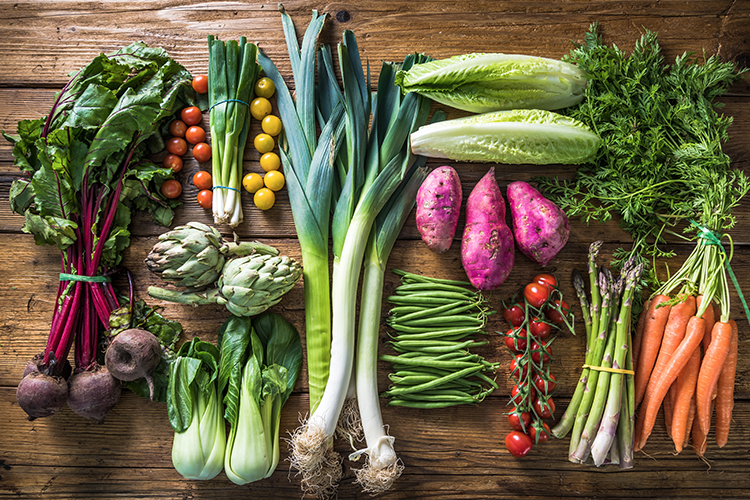Blog
Eating sustainably
 The industrialized food system has grown a whole lot over the past century and has offered a consistent supply of food for many across the globe.
The industrialized food system has grown a whole lot over the past century and has offered a consistent supply of food for many across the globe.
But there seems to be some environmental implications with the way it is currently operating. And nowadays, much of the food supplied is high energy, nutrient poor manufactured stuff, that when consumed in excess can cause serious harm to health.
Getting fresh whole food required for good health can be difficult for some due to location, climate or financial constraints. Processed and packaged foods that offer little nutritional value are what some communities rely on for much of their daily energy intake. Sure, people are being fed something, but simultaneously we have witnessed increased incidence of many chronic health conditions related to poor diet. Conditions that heavily impact quality of life.
Environmentally, it has been reported that food production systems contribute 19-29% of greenhouse gas emissions, along with deforestation, degradation of land and soil, and water use. 1-2 High consumption of factory-farmed meat and eating foods trucked in from all over the globe have been implicated in this significant environmental impact.
So how do we feed the world well whilst minimising environmental impact? It is a task many are grappling with.
Growing food in bulk and transporting it a distance will likely remain a part of our food industry future. And government involvement may be needed to provide access to nutritious food, perhaps in the form of subsidies for farmers of fresh produce.
In the meantime, many of us as consumers with the privilege to choose what we eat can each take steps to make small and sustainable changes that can benefit our individual health and the health of the environment. While changing our food buying and eating habits can seem daunting (especially in our super busy lives), remember every action counts – big or small!
Read on for a few ideas for you to consider.
How you can start eating more sustainably
Enjoy seasonal produce. Eating veg and fruit with the seasons is more nutritious, and can entice us to eat different foods we haven’t tried before. Diversity in diet can be wonderful for health (our gut bugs love it!), and you may find it tastier and cheaper too!
You can buy in bulk and freeze (a good way to retain some nutritional quality), and there are guides all over the interweb for what to look for in your area, like these in Australia, New Zealand, and the U.S.
Find a farmers market and buy locally. Countries like Australia and New Zealand are hugely privileged with our growing climate, and we can get hold of super tasty seasonal food, whilst putting our money in the pockets of the growers, instead of big industry.In addition, it is known as soon as produce is harvested the nutritional quality begins to deteriorate.
You can try to maximize the nutritional quality (and taste) buying locally and seasonally. If you find you pay a little more to buy local, you may very well be saving your health in the longer-term.
Boost your plant consumption, particularly in the form of vegetables. By reducing meat consumption, and increasing intake of vegetables, we can help ease the burden of intensive animal agriculture on the environment.
In fact, a recently released systematic review from RMIT found veg, fruit, legumes and nuts have the lowest greenhouse gas emissions compared with other foods, especially red meat. However, they weren’t advocating to cut out meat altogether, instead stating, “it is possible to substitute red meat (beef and lamb) with other meats, or plant-based protein sources such as lentils and nuts that have a lower impact.” Then, when eating meat, choose good quality, such as organic and free-range eggs and poultry; ethically raised meat; organic dairy; and sustainably caught seafood.
We can get enough of the essential nutrients from meat without eating it every day, and enhance health by eating more veg through the fibre, vitamin, mineral, and phytochemical content. If are concerned about protein, iron, zinc and vitamin B12 intake, Dr. Rosemary Stanton discusses this succinctly here.
Use it all. Food waste is a huge concern. 35% of municipal waste is food alone – oh dear! Only buy what you need, and don’t mistake ‘Best Before’ for ‘Used By’- the former is an indication of quality and the latter exists for safety.And embrace the ugly produce. Supermarkets often won’t accept food that doesn’t meet certain aesthetic criteria. Consequently, farmers often toss it. But fresh food doesn’t need to be perfect to provide you with the goodness and tastiness.
Make your own. You may be surprised that it can be quicker to whip up a simple yet delicious and nutritious meal than order and collect/wait for take-out. And you won’t end up with all that take-out packaging destined for landfill.
Boosting nutritional value of your diet can be simple and easy! We have plenty of ideas on our website and in our books and e-books. And you will avoid the excessive amounts of added sugar, salt, and trans-fats in many pre-packaged and take-out foods. Whilst you are at it, cook double the quantity and hey presto, you have lunch or dinner for the next day!
Know that you can make changes slowly. For example, try one new seasonal vegetable in one new recipe a week. Choose the locally grown alternative for one food in your next shop, like Australian berries over those from Chile. If you have meat every day, try one or two meat-free days a week. Or reduce waste by getting creative with ways to use every part of the food like adding the tops of celery to soups, stock or stews, extracting its gorgeous fresh flavor.
Making sustainable and healthy foods available and affordable to all is a must. Not everyone has the privilege or even the desire to grow their own food, so access is critical. But every small change counts, be it eating more veg, enjoying fresh produce over stuff from a packet with a long list of ingredients, or buying from a local grower.
Overall, when and where you can, think local, eat seasonal, and enjoy real, whole food.
By Angela Johnson (BHSc Nut. Med.)
References:
- 1. Garnett, T 2014, ‘Changing what we eat: Research and action on widespread adoption of sustainable healthy eating’, Food Climate Research Netowrk, viewed 23 June 2016, <http://www.fcrn.org.uk/sites/default/files/fcrn_wellcome_gfs_changing_consumption_report_final.pdf>
- Vermeulen, SJ Campbell, BM & Ingram, JSI 2012, ‘Climate Change and Food Systems’, Annual Review of Environment and Resources, no. 37, pp. 195-222.











